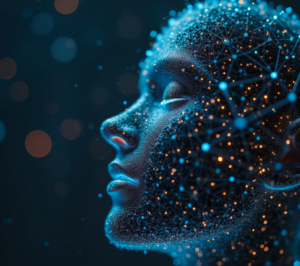
Learn about AI bias, its impact on society, and how to address the issues of discrimination in artificial intelligence. Discover solutions to make AI systems more fair and inclusive.
Artificial intelligence (AI) is rapidly transforming the way we interact with the world, from automating mundane tasks to making life-changing decisions. Whether it’s in hiring, healthcare, criminal justice, or finance, AI’s decision-making power is growing. However, as AI systems become more embedded in our lives, concerns about their fairness and impartiality have arisen. AI bias—the presence of systematic and unfair discrimination in machine learning algorithms—is one of the most pressing challenges today.
AI bias doesn’t just reflect a lack of equality in how algorithms operate; it has real-world consequences that disproportionately affect marginalized and underrepresented groups. Addressing this issue is crucial to ensuring that AI works for everyone, regardless of race, gender, ethnicity, or socioeconomic status. In this article, we explore the nature of AI bias, its far-reaching impact on society, the causes behind it, and potential solutions to mitigate its harmful effects.
What is AI Bias?
AI bias refers to systematic and unfair discrimination in AI systems, which can manifest in various ways, from biased data to flawed algorithmic design. It’s important to recognize that AI itself isn’t inherently biased—rather, it reflects the biases in the data it learns from and the decisions made by its human creators. The challenge lies in ensuring that AI systems are trained on data that is both comprehensive and equitable, and that the algorithms driving them are designed to be fair and transparent.
AI bias can arise from several sources, including:
- Data Bias: When the data used to train AI models is unbalanced or unrepresentative of the population, the model may produce biased results.
- Algorithmic Bias: This type of bias happens when the design of the algorithm itself results in discriminatory outcomes, even if the data used is unbiased.
- Prejudice Bias: This is the result of societal biases reflected in the data, such as historical biases regarding race, gender, or age.
- Measurement Bias: This occurs when the way data is collected, measured, or interpreted results in biased conclusions.
Each of these forms of bias has different implications for AI decision-making, but they share a common theme: they all undermine fairness and can perpetuate systemic inequality.
The Impact of AI Bias and Discrimination
The impact of AI bias goes far beyond theoretical discussions—it affects real people’s lives. Biased AI systems can exacerbate existing inequalities in society, perpetuating discrimination across various sectors. Here are some specific examples where AI bias and discrimination have had significant consequences:
1. Criminal Justice
AI tools are being used to assess risk in criminal justice systems, such as determining the likelihood of recidivism in parole decisions. Tools like COMPAS (Correctional Offender Management Profiling for Alternative Sanctions) are designed to assist judges in making more data-driven decisions. However, studies have shown that these tools can disproportionately predict higher recidivism rates for Black defendants compared to white defendants, even when controlling for factors like criminal history. The data that these tools are trained on often reflects biased policing practices, leading to decisions that unfairly target marginalized communities.
2. Hiring and Employment
In the recruitment and hiring process, AI-driven tools are used to screen resumes, evaluate candidate qualifications, and even conduct interviews. However, biased data can lead to discriminatory hiring practices. For example, an AI system trained on resumes from previous employees might develop a preference for candidates who share similar characteristics to those in the historical data (e.g., predominantly male or white). This can lead to gender and racial disparities in hiring outcomes. In 2018, Amazon scrapped an AI recruitment tool because it was found to be biased against women, particularly in technical roles.
3. Healthcare
AI systems are increasingly being used for diagnostics, patient risk prediction, and treatment recommendations. However, these systems often face issues when the data used to train them is not diverse enough. For example, many medical AI models are trained predominantly on data from white patients, leading to inaccurate diagnoses or ineffective treatments for people of color. A 2019 study found that some AI algorithms used to predict patient health risks were less accurate for Black patients than for white patients, potentially leading to health disparities.
4. Finance and Lending
AI is widely used in financial services to assess creditworthiness, determine loan eligibility, and evaluate investment risks. However, if the data used to train these systems is biased (e.g., reflecting historical discrimination in lending practices), AI models may unfairly deny loans or offer higher interest rates to certain groups based on race, gender, or socioeconomic status. For instance, studies have shown that Black and Hispanic individuals are more likely to be rejected for loans or offered higher rates compared to their white counterparts with similar credit scores.
5. Advertising
AI is also used to target advertisements on platforms like Facebook and Google. However, biased AI algorithms can result in certain groups being excluded from job or housing ads. For example, a study found that Facebook’s advertising system was excluding women from high-paying job ads, such as those in the technology sector. This kind of algorithmic discrimination reinforces gender and racial stereotypes, limiting opportunities for marginalized groups.
These examples underscore the pervasive nature of AI bias and highlight the urgent need for proactive measures to address these issues. The consequences of biased AI can extend beyond immediate impacts on individuals—it can perpetuate inequality and undermine public trust in AI systems.
Causes of AI Bias
The causes of AI bias are multifaceted and complex. Understanding these causes is essential to identifying solutions and mitigating their effects. Here are the key factors contributing to AI bias:
1. Historical Bias in Data
Many AI systems are trained on historical data that reflects past human biases. For example, if an AI tool is used to predict the likelihood of a defendant reoffending, and the data it uses comes from a justice system that has disproportionately incarcerated people of color, the AI model will likely learn and replicate these biased patterns. Historical bias is one of the most common and challenging causes of AI bias, as it reflects systemic issues in society that have been embedded in data over time.
2. Imbalanced Data
AI systems require large datasets to learn from, but if those datasets are unbalanced, the AI model may favor certain outcomes over others. For example, facial recognition technology has been shown to be less accurate for people with darker skin tones, as the datasets used to train these systems often have fewer images of people from diverse racial backgrounds. This results in biased predictions and errors when the system encounters individuals outside of the demographic it was primarily trained on.
3. Bias in Human Design
Even with unbiased data, AI models can still be biased due to the decisions made by human designers during the model creation process. For example, developers may unintentionally select features or make algorithmic choices that favor one group over another. These biases may not be immediately obvious, but they can have significant consequences if not carefully examined.
4. Lack of Diverse Data Representation
If the data used to train AI systems is not sufficiently representative of the population it is meant to serve, the model’s predictions will be skewed. For example, health-related AI models trained on data from predominantly white patients may perform poorly when applied to patients of color. Ensuring diverse representation in the data is crucial for reducing bias in AI systems.
Addressing AI Bias and Discrimination
While AI bias is a serious issue, there are several ways to address and mitigate its effects. Below are practical strategies that can be implemented by developers, organizations, and policymakers:
1. Diverse and Representative Data Collection
The most effective way to reduce AI bias is by ensuring that the data used to train AI systems is diverse and representative of the populations the systems will serve. This means collecting data from a wide range of demographic groups, including different races, genders, ages, socioeconomic statuses, and other factors. In particular, data from underrepresented groups should be included to avoid biases in the model.
2. Bias Detection and Auditing
Regular auditing and testing for bias should be part of the AI development process. AI models should be rigorously evaluated to ensure that they do not favor one group over another. This can be done by testing the models with different demographic groups and assessing whether their predictions are equitable. If biases are detected, developers should work to adjust the model to minimize those biases.
3. Transparent AI Models
Transparency in AI development is essential for accountability. Developers should make the workings of their AI systems transparent by documenting how algorithms are designed, what data is used, and the rationale behind the model’s decision-making process. This transparency helps to identify any potential sources of bias early on and enables stakeholders to assess whether the system is fair.
4. Inclusive AI Development Teams
AI developers should work in diverse teams that bring different perspectives to the table. Diverse teams are better equipped to identify biases and ensure that AI systems are designed with fairness in mind. Encouraging diversity in tech fields, particularly in AI and machine learning, is critical for addressing the issue of bias in AI development.
5. Ethical Guidelines and Policy Frameworks
Governments and organizations must create clear ethical guidelines and policies that prioritize fairness in AI. These guidelines should ensure that AI systems are designed with human rights and equity in mind. Policymakers should also work to regulate the deployment of AI systems, ensuring that they are audited regularly for bias and that corrective actions are taken when necessary.
6. AI Fairness Tools and Algorithms
Researchers are developing fairness algorithms that can be incorporated into AI models to reduce bias. These tools adjust the way models weigh different features or apply different training techniques to ensure that the resulting system is fairer. AI fairness tools can help mitigate the impact of biased training data and ensure that AI systems make more equitable decisions.
AI has the potential to greatly benefit society, but for it to do so equitably, AI bias must be addressed head-on. The biases inherent in many AI systems reflect deep societal issues that, if unchecked, can perpetuate inequality. By focusing on diverse data collection, algorithmic transparency, inclusive development teams, and ethical guidelines, we can work toward building AI systems that are fair and just for all.
As AI continues to evolve, it is crucial that we remain vigilant in identifying and addressing bias. Through concerted effort and a commitment to fairness, we can ensure that AI serves all members of society equally and without discrimination.
FAQ: AI Bias and Discrimination
1. What is AI bias?
AI bias occurs when an artificial intelligence system produces results that systematically favor one group over another, often due to biased data or flawed algorithmic design.
2. How does AI bias impact society?
AI bias can perpetuate existing inequalities in areas like criminal justice, healthcare, hiring, and finance, often disadvantaging marginalized groups and reinforcing societal prejudices.
3. Can AI systems be made completely unbiased?
It is difficult to create completely unbiased AI systems, but significant progress can be made by using diverse and representative data, conducting regular audits, and incorporating fairness algorithms.
4. How can we address AI bias?
AI bias can be mitigated by ensuring diverse data representation, using bias detection tools, promoting transparency in AI models, creating inclusive development teams, and establishing clear ethical guidelines.
5. Why is diverse representation important in AI?
Diverse representation ensures that AI systems are designed to work fairly for all groups, reducing the risk of bias against underrepresented populations and improving the overall effectiveness of AI solutions.
6. How does AI bias differ from human bias?
AI bias arises from data and algorithmic design choices, whereas human bias is rooted in individual beliefs and societal prejudices. While human bias is often conscious, AI bias is typically unconscious and results from the data fed into the system. However, both can have similar outcomes in perpetuating inequality if not addressed.
7. What are fairness algorithms, and how do they help with AI bias?
Fairness algorithms are computational techniques designed to reduce bias in AI models by adjusting how algorithms process data. These algorithms can ensure that certain groups are not unfairly disadvantaged, improving the fairness of predictions or decisions made by AI systems. Examples include re-weighting training data or applying statistical corrections to model outputs to make them more equitable.
8. Can AI bias be completely eliminated?
Completely eliminating AI bias is difficult due to the complexities of human society and the nuances in data. However, by continuously monitoring and improving AI systems, we can significantly reduce bias. It requires ongoing efforts, including data diversification, better algorithm design, and proactive auditing to minimize the negative impacts of bias.
9. How can companies prevent AI bias in their hiring tools?
Companies can prevent AI bias in hiring tools by ensuring their data is diverse and representative, using bias-detection software, conducting regular audits of AI outcomes, and involving diverse teams in the development process. Additionally, companies can provide transparency in how AI systems make hiring decisions and implement fairness protocols to minimize discrimination.
10. Are there any legal implications for AI bias?
Yes, there are potential legal implications for AI bias, especially if AI systems violate anti-discrimination laws. For example, in the U.S., the Equal Employment Opportunity Commission (EEOC) may investigate biased hiring practices involving AI, and regulatory bodies in the EU are considering stronger legislation on AI ethics. Companies could face lawsuits or regulatory penalties if their AI systems are found to be discriminatory.



